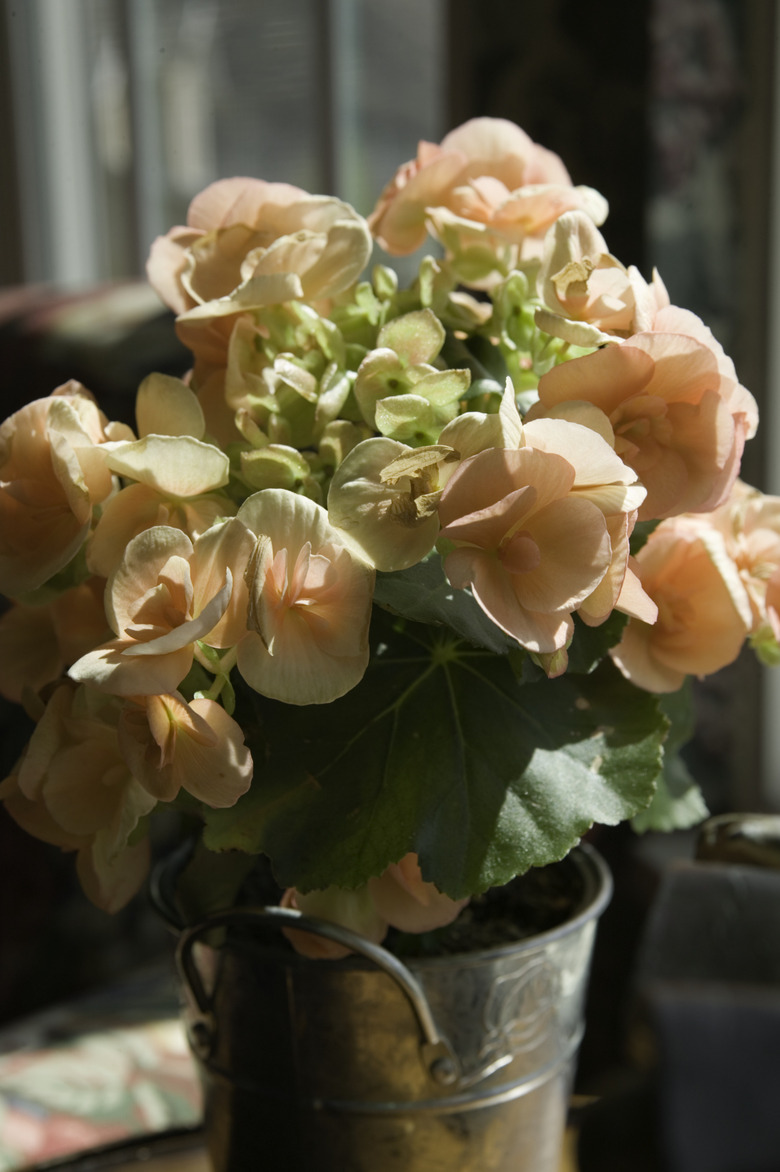Can Metal Buckets Be Used As Flower Pots?
Metal buckets make convenient containers for your flowering plants, and they bring a touch of rustic beauty or industrial style to your yard. Whether small or large, metal buckets need a bit of attention to make sure they are ready for your plants and can withstand years of wear and tear.
Pros and Cons
Step 1
Recycling a leaky metal bucket is a top reason for using one as a planter. Metal is a strong material that's heavy enough to keep plants from tipping over, but it doesn't control soil temperature well. In hot weather, the metal transfers that heat to the soil, causing it to dry out quickly. This means you must water it more often than if you used a wood or plastic container.
Durability
Step 1
Metal buckets can last for years, but some are prone to rust. Galvanized steel buckets aren't likely to rust on their own, but any action that exposes the inner layers of metal can increase the risk of rust. Drilling drainage holes, for example, can lead to rust in the bottom of the bucket. Scrubbing the bucket with an abrasive cleaner or pad can remove the protective coating and create tiny scratches in the metal, exposing unprotected areas to the elements. Painting the bucket with a clear or colored rust-protective sealer can help prevent rust problems.
- Metal buckets make convenient containers for your flowering plants, and they bring a touch of rustic beauty or industrial style to your yard.
- Scrubbing the bucket with an abrasive cleaner or pad can remove the protective coating and create tiny scratches in the metal, exposing unprotected areas to the elements.
Drainage
Step 1
Buckets, by nature, are designed to be watertight, but this isn't healthy for plants. Using a 1/2-inch metal drill bit allows you to make drainage holes in the bottom of the bucket, which lets excess water drain away from your flowers' root systems. Smaller buckets need at least three holes, and larger buckets — 5 gallons or more — need at least six holes.
Quick Changes
Step 1
Instead of putting soil directly into the metal bucket, use it as a quick way to change out seasonal flowers. Line the bottom with some gravel to help with drainage, then place entire pots of flowers into the bucket — you can use the plastic pots the plants come in. Make sure the bucket is deep enough to hide the pots. Small buckets might hold just one pot of flowers, while larger buckets give you the opportunity to create a container garden. Keeping the plants in separate pots lets you water them individually to meet their needs, and you can easily remove plants and replace them as the seasons change.
- Buckets, by nature, are designed to be watertight, but this isn't healthy for plants.
- Using a 1/2-inch metal drill bit allows you to make drainage holes in the bottom of the bucket, which lets excess water drain away from your flowers' root systems.
